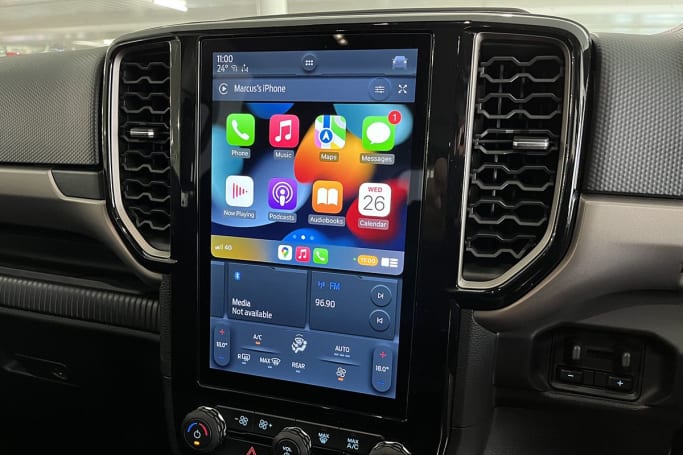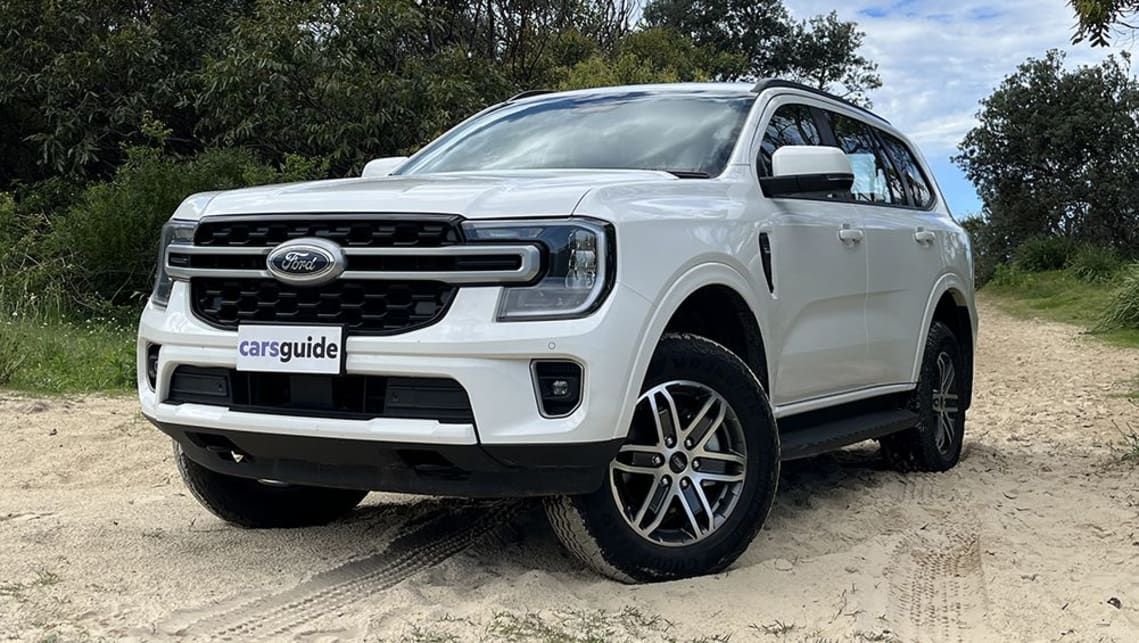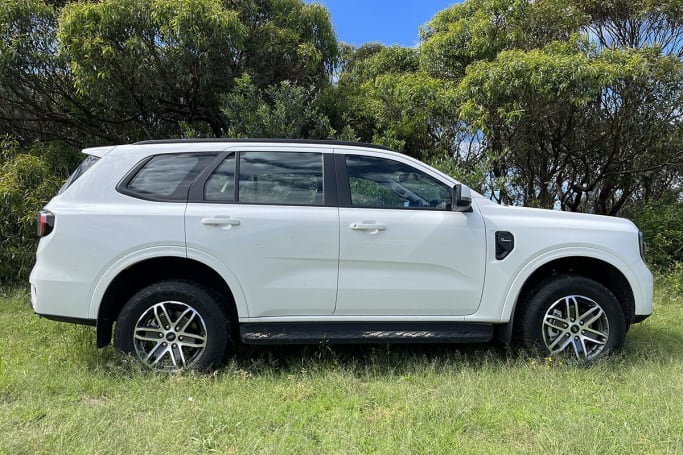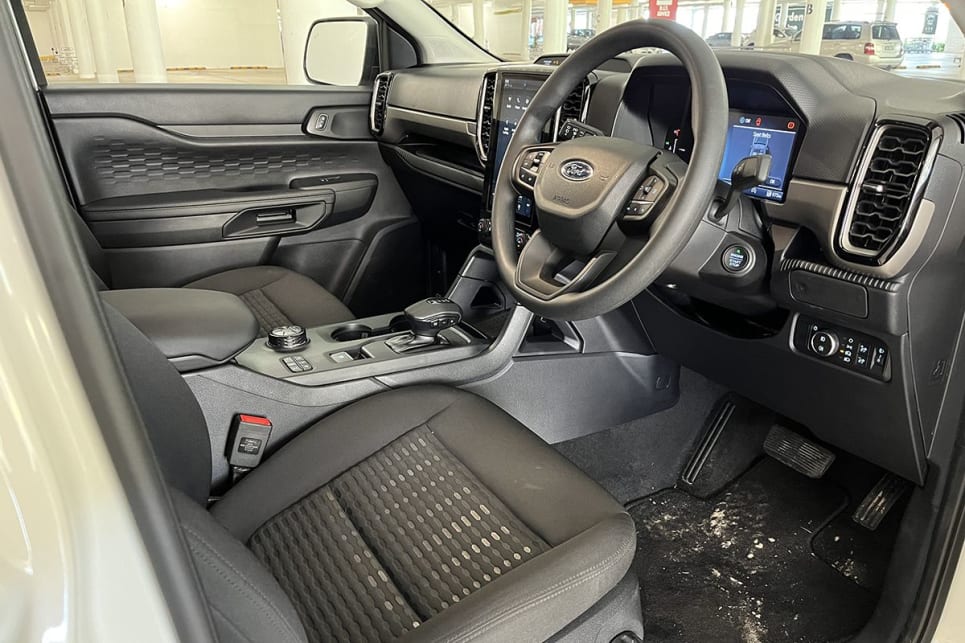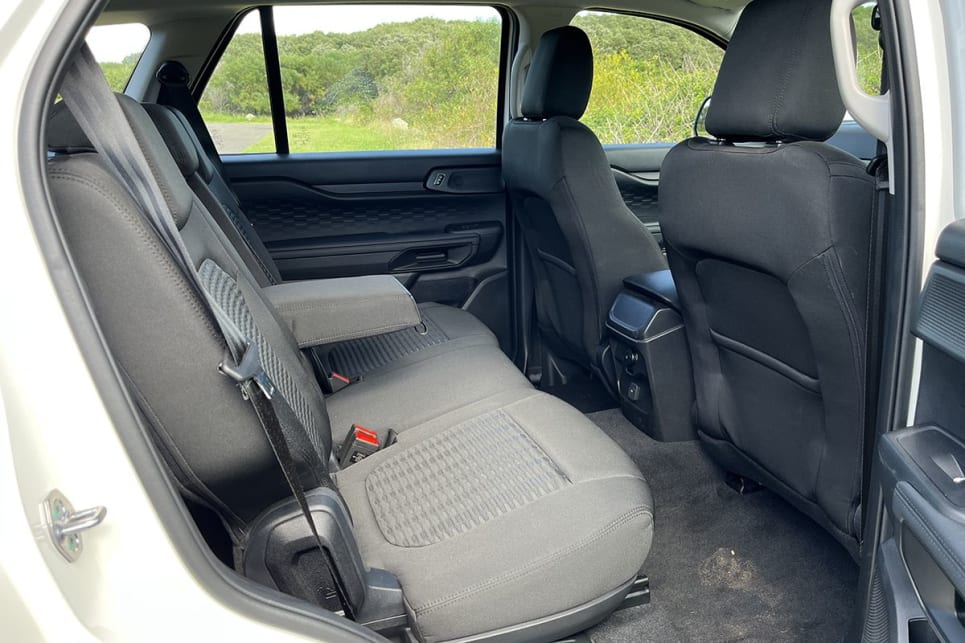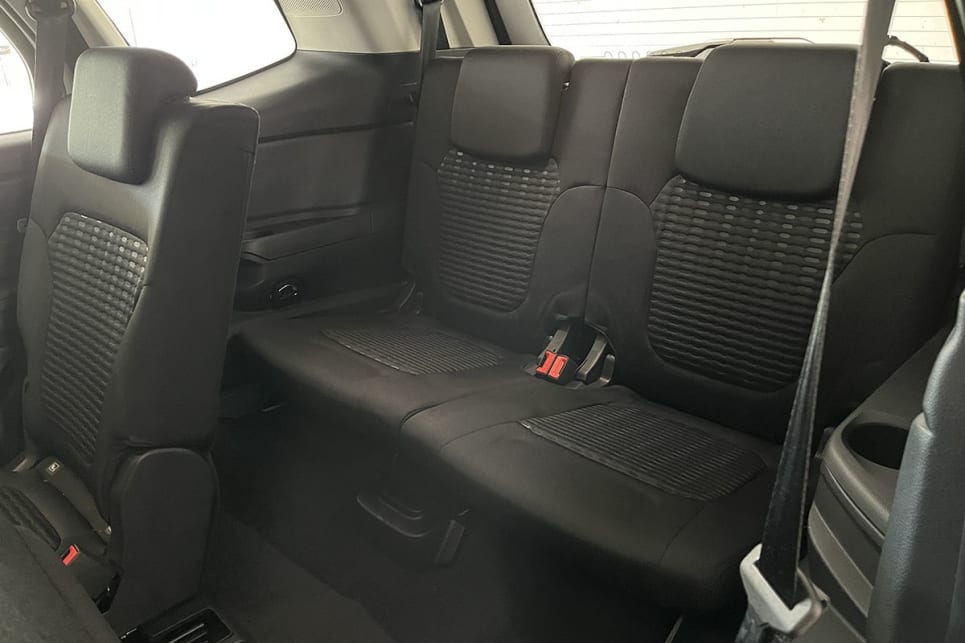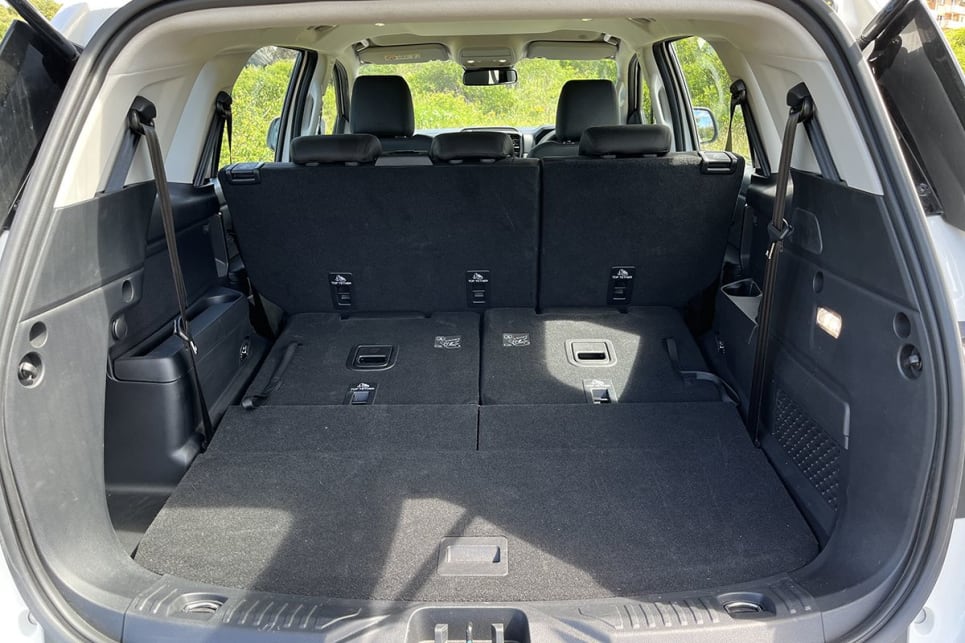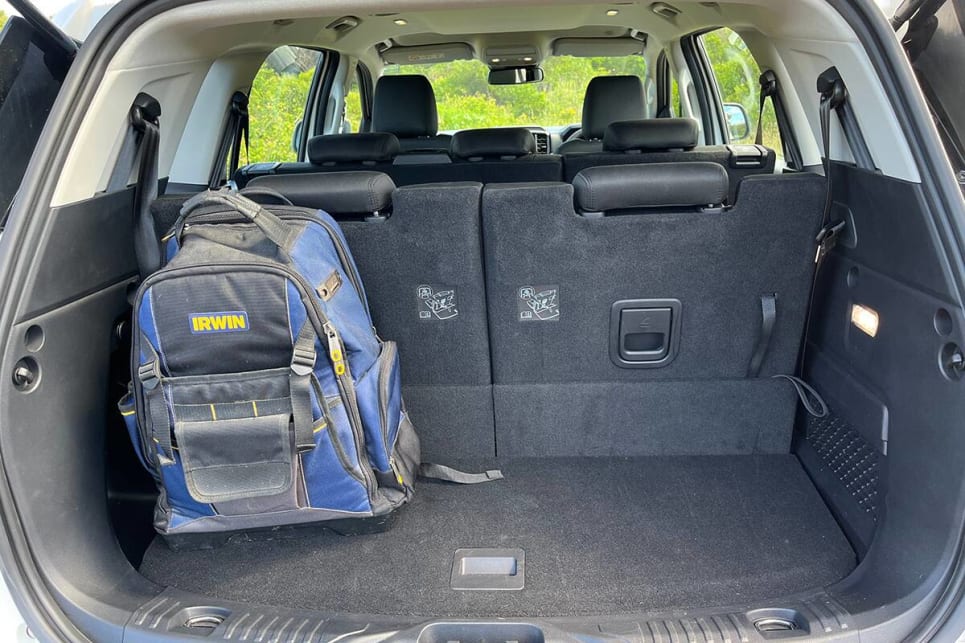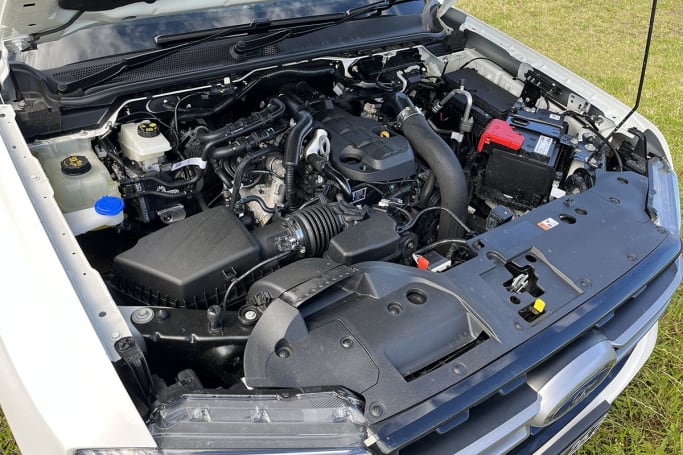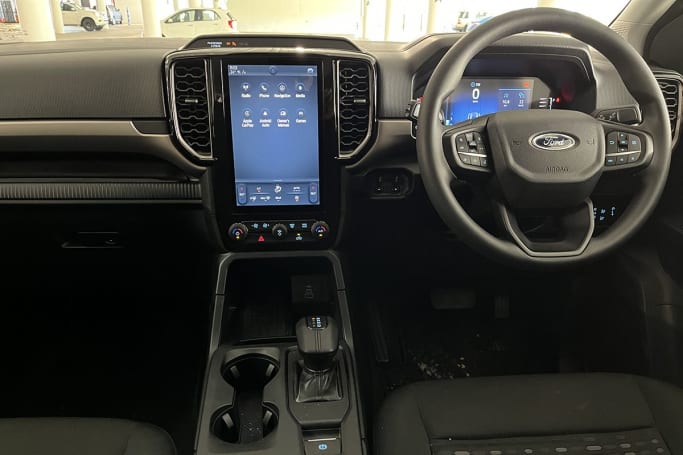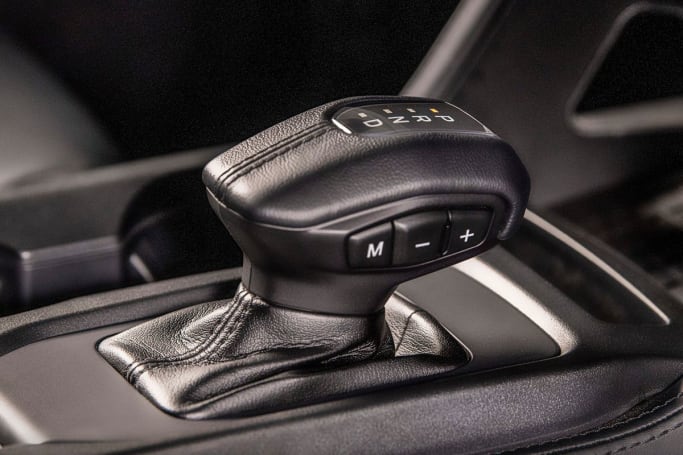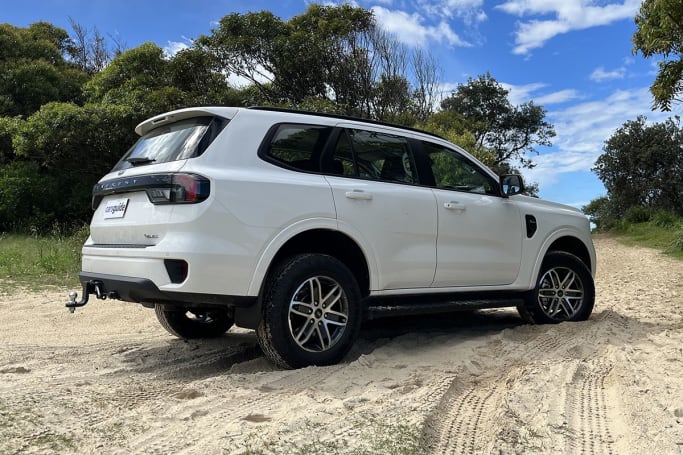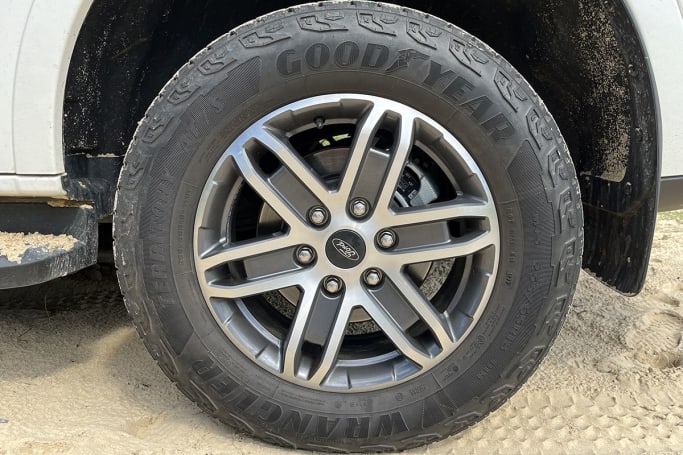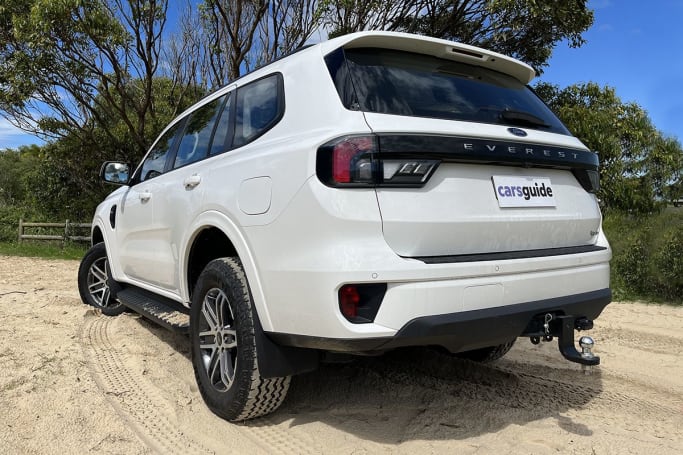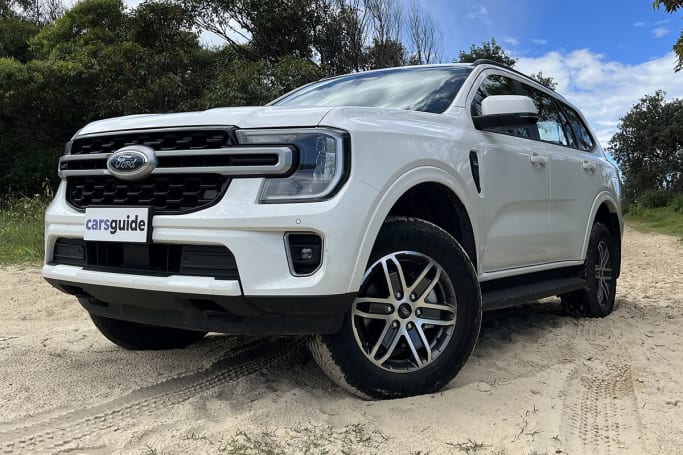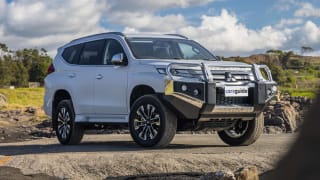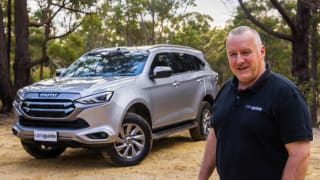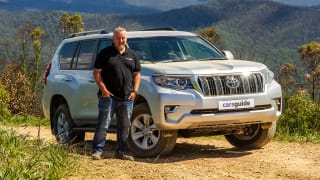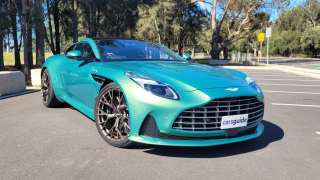Our test vehicle is a base-spec Ambiente, with a 2.0-litre bi-turbo diesel engine and a 10-speed automatic transmission. It comes standard as a rear-wheel drive vehicle but ours was an optional upgrade to full-time 4WD, which costs $5000.
So, this 4WD Everest’s manufacturer suggested retail price (MSRP) is $57,990 (excluding on-road costs).
Standard features on the Ambiente include 10.1-inch portrait-style touchscreen multimedia system (with wireless Apple CarPlay and wired Apple CarPlay and Android Auto), 17.0-inch alloy wheels, C-Shaped LED daytime running lights, dual-zone climate control, five seats cloth trim, smart keyless entry with push button start, electric parking brake and plenty more.
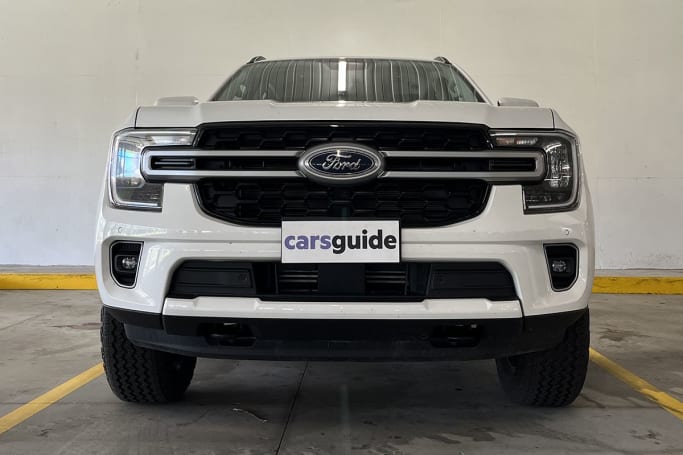
But our test vehicle has been boosted from a five- to seven-seater ($950) and has Ford’s factory-fitted tow pack, which costs $1700, and 18.0-inch alloys and Goodyear Wrangler Territory all terrain tyres (rather than the standard 17-inch wheel-and-tyre package) and an alloy spare ($1100), pushing this Everest’s MSRP up to $61,740 excluding on-road costs.
It also has e-shifter gear shifter (only on 4×4 variants), locking rear differential (only on 4×4 variants), and push-button selectable drive modes.
Our test vehicle has the no-cost option Arctic White exterior paint, but all other colours – Meteor Grey, Aluminium Silver, Sedona Orange, Equinox Bronze and Shadow Black – are prestige paint colours and cost $700.
